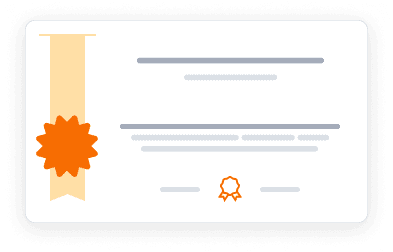Learn Rhino software for 3D modeling. Gain design skills and create complex 3D models, from basic shapes to printable designs.
Learn Rhino software for 3D modeling. Gain design skills and create complex 3D models, from basic shapes to printable designs.
Master 3D modeling with Rhino in this practical course from the University of Michigan. Designed for beginners, this course teaches both software skills and fundamental design concepts. Learn to navigate Rhino's interface, create and manipulate 3D objects, and develop complex designs. Explore 2D and 3D modeling techniques, including surface modeling, profile modeling, and Boolean operations. Gain hands-on experience with 3D rendering and preparing models for 3D printing. Perfect for aspiring designers, architects, and engineers, this course provides a solid foundation in 3D modeling and design skills.
3.8
(23 ratings)
12,714 already enrolled
Instructors:
English
پښتو, বাংলা, اردو, 2 more
What you'll learn
Understand 3D space and object creation in Rhino software
Master basic design concepts including line, shape, form, and space
Create and edit 2D and 3D designs using various modeling techniques
Utilize advanced tools for surface and solid modeling
Develop skills in 3D rendering and preparing models for 3D printing
Apply learned techniques to create a final 3D modeling project
Skills you'll gain
This course includes:
12.1 Hours PreRecorded video
10 quizzes
Access on Mobile, Tablet, Desktop
FullTime access
Shareable certificate
Closed caption
Get a Completion Certificate
Share your certificate with prospective employers and your professional network on LinkedIn.
Created by
Provided by

Top companies offer this course to their employees
Top companies provide this course to enhance their employees' skills, ensuring they excel in handling complex projects and drive organizational success.





There are 4 modules in this course
This course provides a comprehensive introduction to 3D modeling using Rhino software. Students learn the fundamentals of 3D space, object creation, and manipulation. The curriculum covers 2D and 3D design techniques, including surface modeling, profile modeling, and Boolean operations. Participants gain practical skills in creating complex 3D models, from basic shapes to intricate designs. The course also introduces 3D rendering and 3D printing concepts, rounding out the foundational knowledge in 3D modeling and design.
the building blocks
Module 1 · 7 Hours to complete
2D drawings
Module 2 · 6 Hours to complete
object modeling
Module 3 · 7 Hours to complete
surface modeling
Module 4 · 6 Hours to complete
Fee Structure
Payment options
Financial Aid
Instructor
Associate Professor of Architecture at the University of Michigan
Glenn Wilcox is an Associate Professor of Architecture at the University of Michigan's Taubman College of Architecture and Urban Planning, where he has been teaching since 1982. He specializes in architectural design, generative design computing, and digital fabrication, and previously held teaching positions at Cornell University and the University of Oregon. His research focuses on architecture as both a technological and cultural artifact, emphasizing the use of computational design and numerically controlled machines to innovate methodologies, materials, and production systems. Wilcox is also the principal of area.architecture, a firm he co-founded in 2003 that engages in a variety of design projects, including competitions and installations. His work has garnered several awards, highlighting his contributions to the field. He holds a Bachelor of Architecture from Temple University and a Master of Architecture from Cornell University.
Testimonials
Testimonials and success stories are a testament to the quality of this program and its impact on your career and learning journey. Be the first to help others make an informed decision by sharing your review of the course.
Frequently asked questions
Below are some of the most commonly asked questions about this course. We aim to provide clear and concise answers to help you better understand the course content, structure, and any other relevant information. If you have any additional questions or if your question is not listed here, please don't hesitate to reach out to our support team for further assistance.



